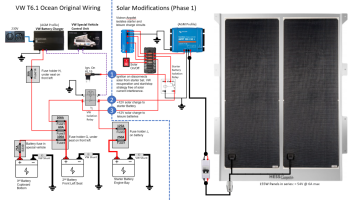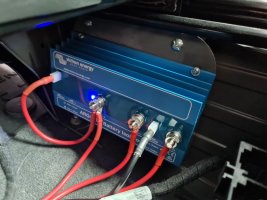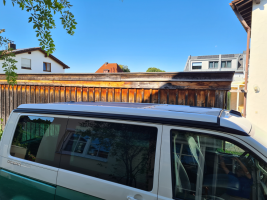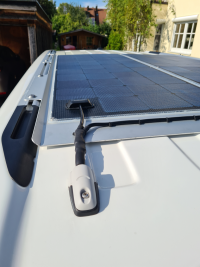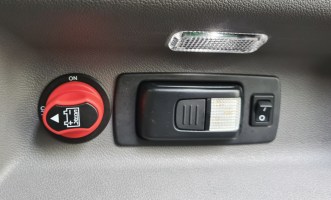One of my main aims is to integrate with the VW Oceans existing equipment (charger, CCU etc.) hopefully without interfering with the VW control of the battery isolation relay, my real problem is I want to charge both the leisure and starter batteries from one solar controller - hence the argofet/relay combination - it charges both leisure and starter with ignition off, charges leisure only with ignition on and VW isolation relay open.Very valid points. We use our van for extended skiing trips to the Alps in winter & a couple of months touring Europe in early summer, then September/ October touring the UK, so we spend a good 4-5 months a year in the van in very varied conditions. You obviously have differing needs & requirements to us, which is fair enough, but I can't help thinking that you are overcomplicating what should be a simple installation. Maybe it's because you are trying to utilise legacy equipment from the Ocean.
You asked for comments & observations, my main offering is keep it simple. Trying to fault find electrical issues in the tiny confines of a packed campervan isn't fun. Forget the isolation relays/argofets etc. Stick a couple of good quality panels on the roof, a suitable Victron MPPT, however much Lithium capacity you think you need, and a maintainer for the starter. Job done.
That's just my opinion for what it's worth.
If I dropped the argofet/relay and connected my solar directly to both leisure and starter batteries I would permanently bridge the VW battery isolation relay with my charging circuit, during starting it would risk the wiring on the charger side being used to supply some starter current from the leisure batteries - and that would instantly blow my charging fuses.
If I just charge the leisure side, then the starter battery will discharge over time while parked - VW isolation relay open - and I don't want this.
I could bridge the VW isolation relay with something capable of transferring starter currents, like a Victron Cyrix battery combiner and just connect the solar to the leisure batteries - I did this on my boat and it worked fantastically - but it would also bridge the VW isolation relay and depending on how much intelligence VW have built into their fault detection may result in fault codes.
It would be sooooo much easier if it were an aftermarket conversion where all the camper equipment could be totally isolated from the rest of the vehicle electrics/electronics. The integrated VW stuff and the CCU are both a blessing and a curse - especially when it comes to modifications.


